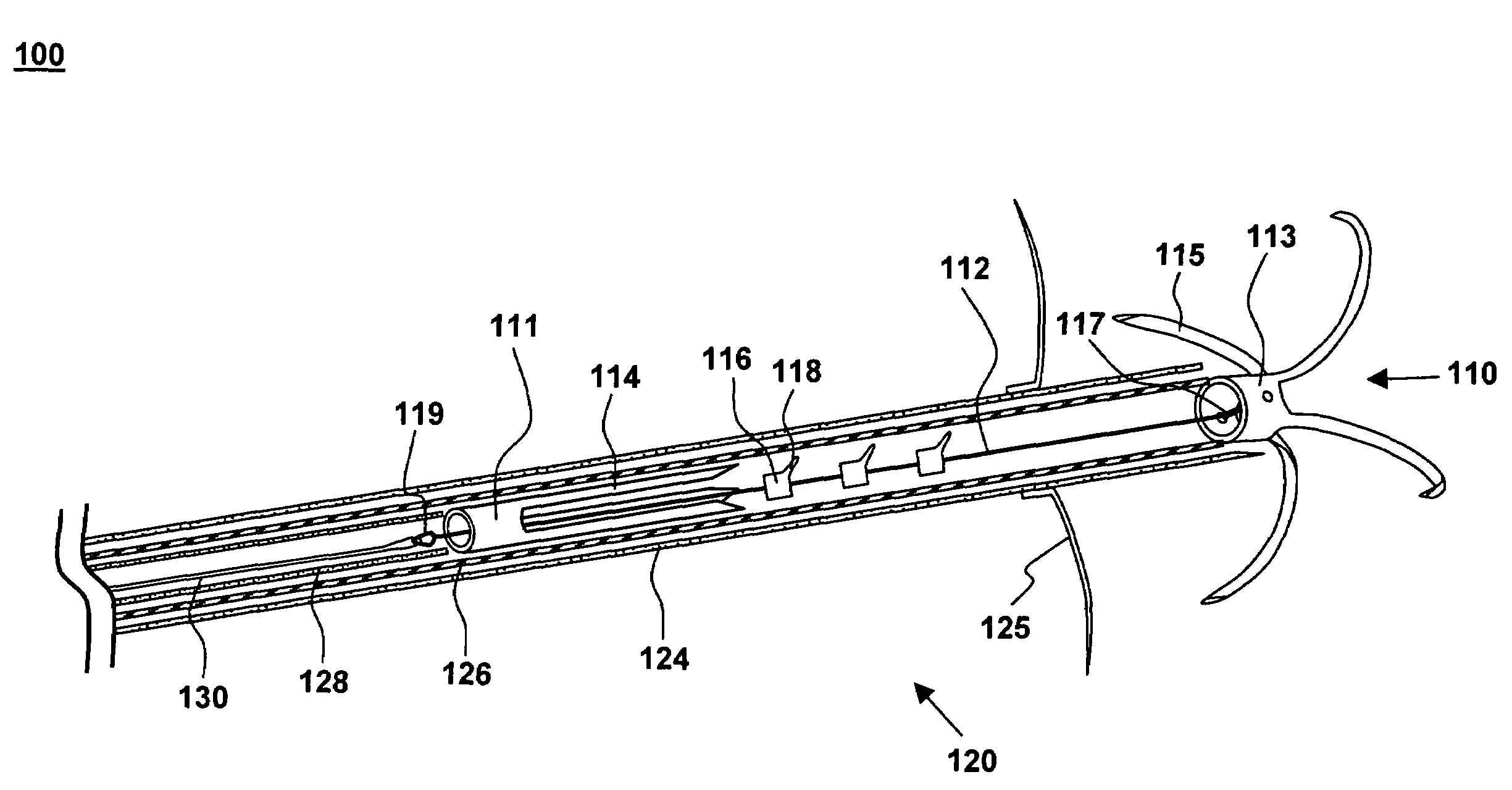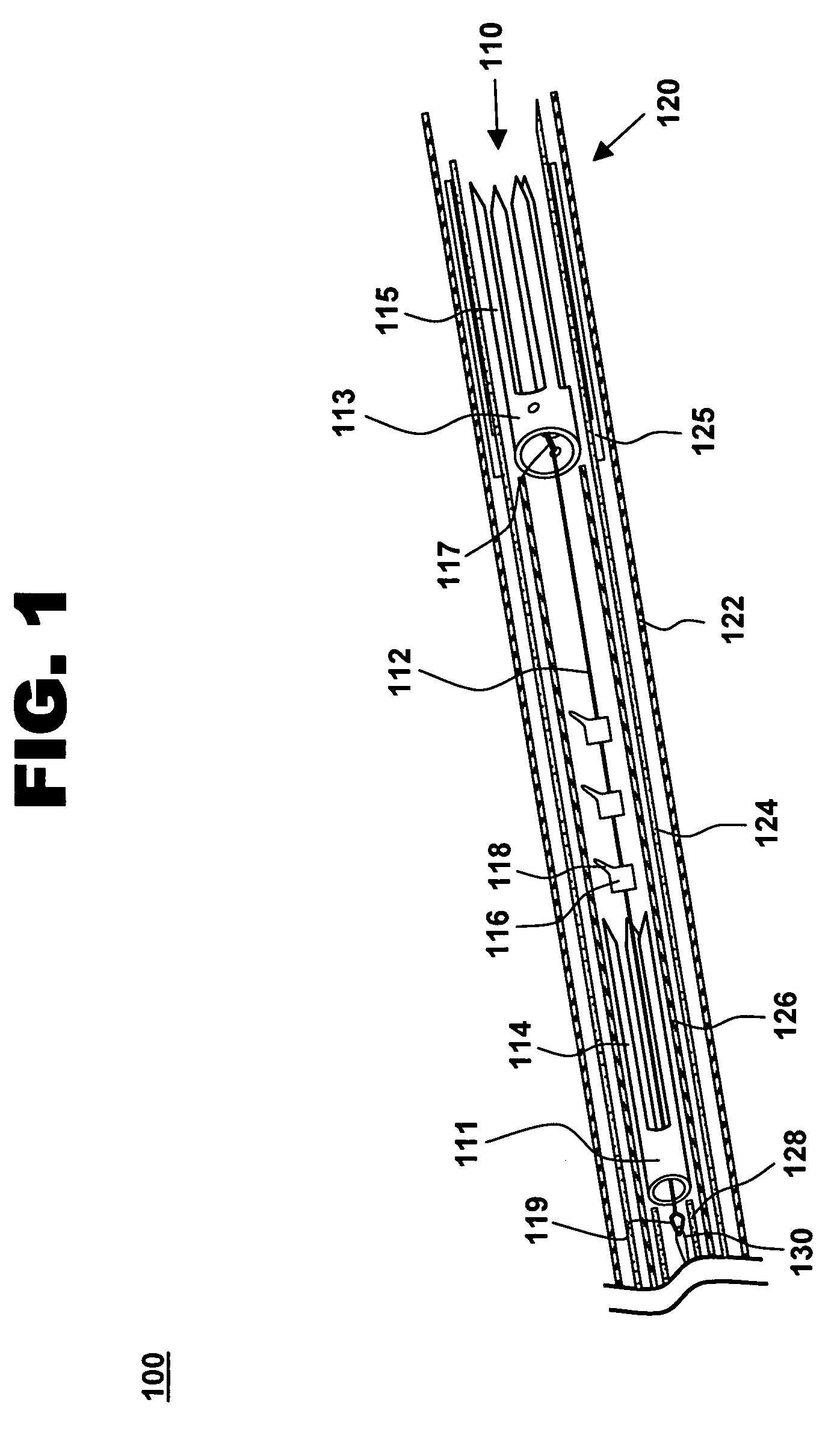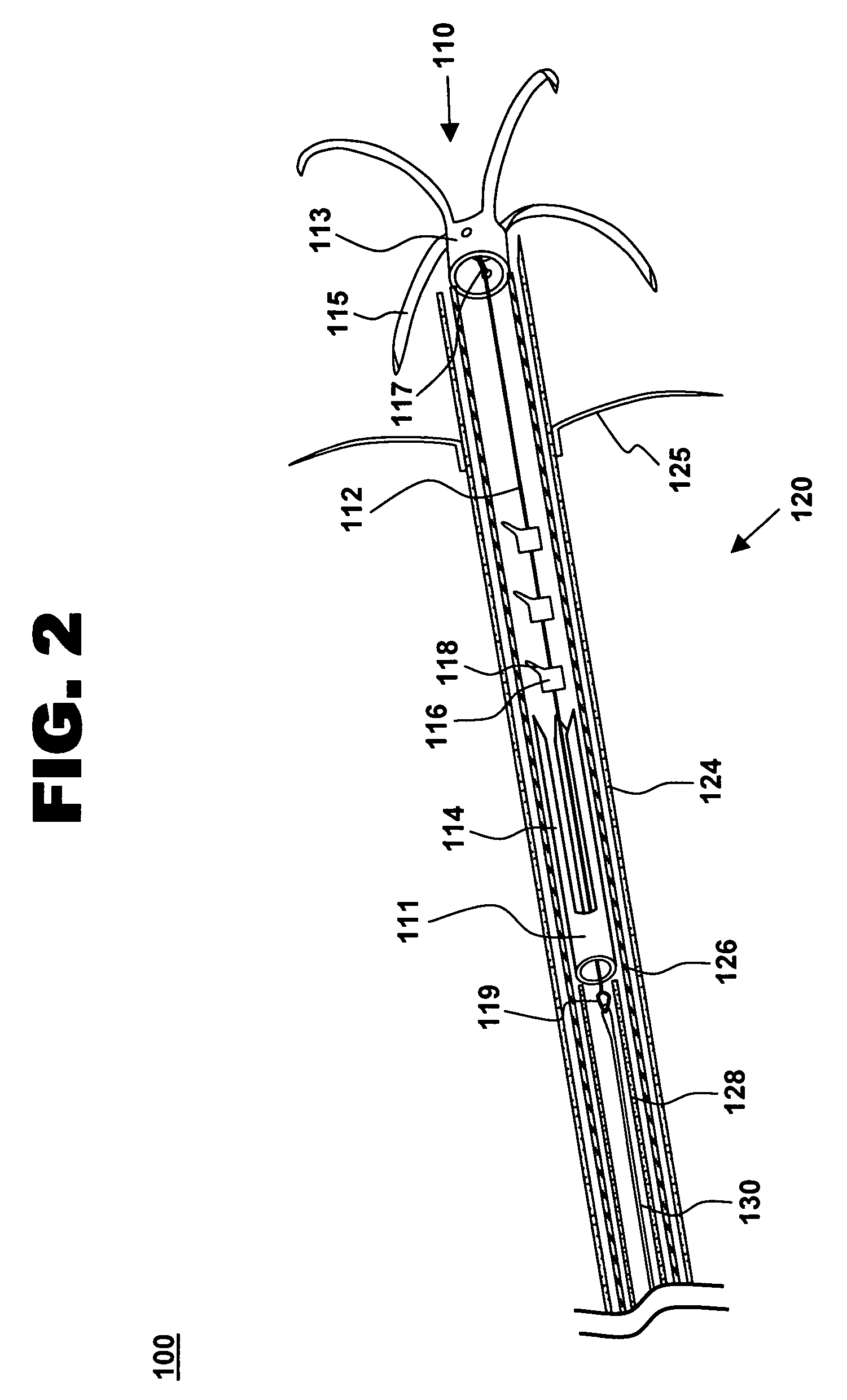Tensioning device, system, and method for treating mitral valve regurgitation
a technology of mitral valve and ejection tube, applied in the field of medical devices, can solve the problems of distorting the shape of the mitral valve, and reducing the ejection volume of the left ventricl
- Summary
- Abstract
- Description
- Claims
- Application Information
AI Technical Summary
Problems solved by technology
Method used
Image
Examples
Embodiment Construction
[0027]One aspect of the present invention is a tensioning device for treating mitral valve regurgitation. One embodiment of the device, in accordance with the present invention, is illustrated in FIGS. 1-3 at 110.
[0028]Tensioning device 110 is designed to be positioned across a chamber of a heart using minimally invasive catheterization techniques. Although described below in the context of treating mitral valve regurgitation by reducing or limiting lateral distension of the left ventricle as the heart beats, device 110 may be deployed at other locations in the heart and is readily adapted to a wide variety of uses, including treating ischemic or dilated cardiomyopathy.
[0029]Tensioning device 110 includes proximal anchoring member 111 positioned adjacent to the proximal end of tether 112, and distal anchoring member 113 positioned adjacent to the distal end of tether 112. As used herein, the terms “distal” and “proximal” are with reference to the treating clinician during deployment...
PUM
 Login to View More
Login to View More Abstract
Description
Claims
Application Information
 Login to View More
Login to View More - R&D
- Intellectual Property
- Life Sciences
- Materials
- Tech Scout
- Unparalleled Data Quality
- Higher Quality Content
- 60% Fewer Hallucinations
Browse by: Latest US Patents, China's latest patents, Technical Efficacy Thesaurus, Application Domain, Technology Topic, Popular Technical Reports.
© 2025 PatSnap. All rights reserved.Legal|Privacy policy|Modern Slavery Act Transparency Statement|Sitemap|About US| Contact US: help@patsnap.com



